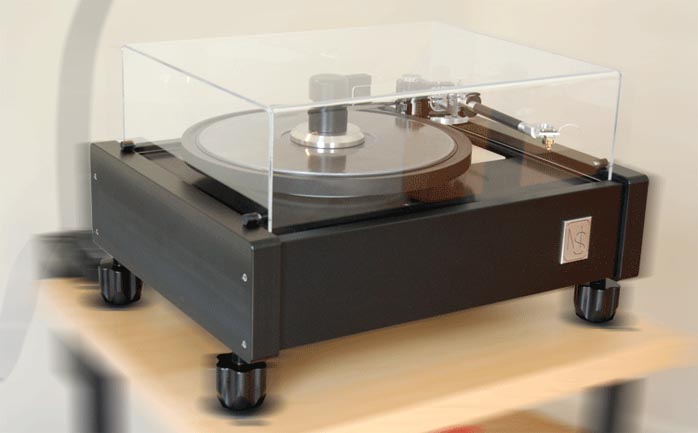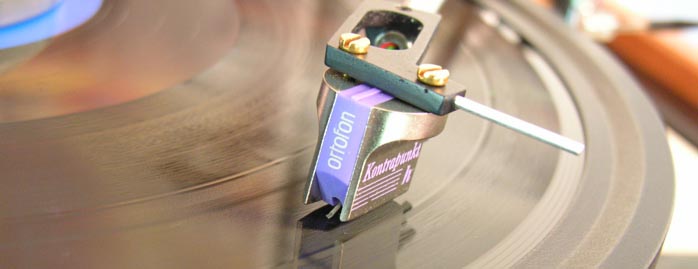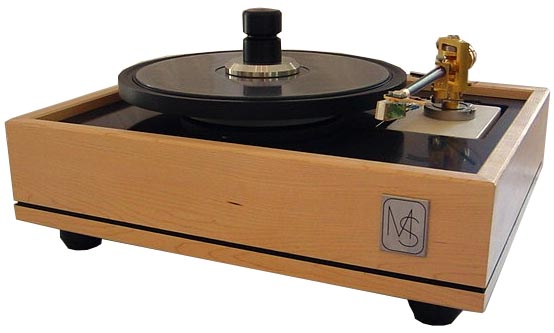|
This review page is supported in part by the sponsor whose ad is displayed above
|
|||||||
 |
|||||||
 |
|||||||
|
Reviewer: John Potis Analog Source: Rega P9 turntable, RB1000 & Hadcock GH Export arms, Rega Super Elys & Garrott Bros Optim FGS Cartridges Digital Source: Accustic Arts Drive 1/Audio Aero Prima SE DAC Preamp: Bel Canto Pre2P Power Amp: Art Audio Carissa, Bel Canto e.One REF1000 and Canary CA-330 monoblocks, Cyber 211 monos [on extended loan], Musical Fidelity A5 Integrated Speakers: Tidal Audio Pianos, Hørning Perikles, Thiel CS 2.4, Ohm Acoustics Walsh 4 with 4.5 mk.2 upgrade Speaker Cables, Interconnects and Digital cables: JPS Labs Superconductor 3 Power Cords: JPS Power AC, Analog AC, Digital AC, Aluminata and Kaptovator Powerline conditioning: Balanced Power Technology 3.5 Signature Plus with ZCable Cyclone Power Cord Sundry accessories: Sound Mechanics Performance Platform, 2-inch Butcher Block platforms with Quest for Sound Isol-pads, Vibrapod Isolators and Cones, Ultra & Heavy ZSleeves, Viablue QTC spikes under speakers, Auric Illuminator, Gingko Audio Mini-Clouds Room size: 12' by 16' with 9' ceiling Review component retail: $8,000 |
|||||||
 |
|||||||
I can't imagine many audiophiles over the age of 35 not knowing who George Merrill is. As an Acoustic Research turntable owner since 1985, perhaps I'm a little more aware of him than many. In the widest of circles back in the mid '70s, Merrill first made a name for himself through his numerous modifications to the various incarnations of AR turntables -- the Merrill Mods as they came to be called -- and achieved what I'd call living legend status. (At about the same time he initiated the design of his own table, dubbed the Merrill Heirloom.) No doubt, if you own an AR turntable, you've at least considered sending it away to have it made into everything that it can be. My own table has undergone the modification process, though not at the hands of Mr. Merrill but those of his new business partner Anthony Scillia. You see, in 2001 and after modifying some 5,000 turntables (and filling another 5,000 upgraded parts order), Merrill found someone to whom he could lend his name and reputation and thereby pass the modifying torch. Backing up to some time before, Anthony Scillia had purchased a used AR table from eBay. While its seller claimed that it had been modified, upon receipt Scillia, to put it politely, was unimpressed with the quality and execution of the so-called upgrades. But maybe Scillia is simply hard to impress. A structural mechanic and a tool and die maker within the aerospace and medical industries, Scillia soon set about modifying his new table in a manner he thought more befitting the classic. Before he knew it, he was designing and machining all his own parts and modifying the tables of friends, which gave him more and more opportunities to make and stay in contact with George Merrill. Eventually, as he was busy with other things, Merrill began looking to divest himself of the modification dealings. Once completely satisfied with the quality of Scillia's work, Merrill began recommending Scillia to AR owners. And so the torch passed. |
|||||||
 |
|||||||
Then one day another opportunity came a-calling. Well, actually, George Merrill phoned Scillia and suggested that the two of them resurrect the old Merrill Heirloom table. A couple of years later, the Merrill-Scillia Research MS21 Transcription Turntable above was born. It embodied everything Merrill and Scillia had learned about turntable design over the years and it was machined to the 'T' because Scillia called upon his resources within the aerospace industry for some of the best and closest tolerance machining to be found anywhere. The latest and greatest modern materials were selected and he called upon some of his compatriots to lend their expertise in various aspects of the MS21's design, such as the synchronous motor and power supply. The MS21 turned out to be everything Merrill and Scillia dreamed - but it also ended up a $24,000 piece. Neither the materials used nor the machining time came cheap. Looking to produce a table with a friendlier street price, Scillia set about producing the MS2, a decidedly less expensive table which now comes to market for the much more affordable if not quite every-man price of $8,000. It uses the exact same innards, the same sub chassis and mechanicals as the MS21, but observes a few labor and material saving ideas. For one, it uses a different power supply. Where the MS21 allows push-button speed changes, the MS2 does not. You'll have to lift the record support platter and move the position of the belt to the 45rpm crown of the pulley to change speeds. Where the plinth on the MS21 is machined from very expensive and inert co- and ter-polymer materials, the MS2 plinth is made of wood framing and a Corian top. I'm sure there are other differences but those are the two main ones. If you're thinking that the MS2 gives you the lion's share of the nuts and bolts of the MS21 for almost 1/3rd the price, you'd be right. |
|||||||
 |
|||||||
The MS2's plinth may represent one cost-cutting concession but when it comes to the control of energy and resonances, there are no further compromises to be found inside. The MS2 utilizes the exact same ter-polymer composite as the MS21's sub chassis. Basically, ter-polymer is an industrial plastic used extensively in Scillia's native aerospace and related industries. In addition to being impervious to the kind of changes in humidity and temperatures likely to be encountered, it was discovered that over the frequencies involved in music playback, this polymer is utterly non-resonant. It's completely inert and that which does not resonate needn't be controlled or damped. Unlike most if not all the competition, the Merrill-Scillia turntables utilize a single sub chassis to support both platter and tone arm. You won't find a tone arm mounting board here. The reasons for this are completely pragmatic. First and as already mentioned, the tone arm will be mounted to a completely inert platform. Second, Merrill & Scillia count very important on the list of turntable design criteria the dissipation of spurious energies and it just so happens that a major contributor of these energies is the tone arm. These energies must be wicked away and disposed of. When it comes to the control and dissipation of these energies, M&S want you to know that a single material, properly suited, is better equipped for the job than two dissimilar ones. They want you to know that not only do two different resonant frequencies complicate matters but that where the two materials are joined represents a major impediment to the free transfer of said energies. By mounting the tone arm directly to the ter-polymer sub chassis, several key objectives are satisfied. As there are no junctions of dissimilar materials, there is no impediment to the wicking away of unwanted energies from the arm. Almost conversely, the non-resonant sub chassis won't transfer scurrilous energies into the arm, either. If you're wondering how one accommodates a new tone arm for the MS table, that's a good question. You'll have to order a new sub chassis from MS Research, setting you back $800. |
|||||||
 |
|||||||
Another major advance represented here comes in the form of a very different type of spring used within the suspended MSR tables. Springs are great at isolating the platter, arm and cartridge from environmental detriments but they have never been without problems. First, they are difficult to set up. Second, Scillia tells me they don't behave in a repeatable fashion and their filtering characteristics are neither stable nor predictable. Springs aren't as stable as they should be in the horizontal plane, either. In a major advancement for sprung tables, MS Research has completely reinvented the spring. Rather than the usual coiled piano wire spring, MSR has come up with a spring machined out of a solid billet of metal. These new springs are not only predictable but their performance is exactly repeatable as tension does not change when the spring is compressed. In other words, its suspending properties remain identical anywhere within the range of the spring. They are also far more stable in the horizontal plane because they are less prone to lateral deflection. This is accomplished through the use of what is termed dual start coil geometry which effectively machines two springs into every piece. Think of a double-helix configuration. These utilize double opposing coil geometry. Close inspection reveals that each spring is actually two springs that circle in opposite directions creating opposing and canceling forces. |
|||||||
 |
|||||||
 |
|||||||
The MS2 uses a two-piece platter because each piece helps damp the other. Rotational drive forces are generated as a belt applies torque to a lower (inner) drive platter. The record bearing platter sits atop the inner platter sandwiching a lead mat designed to absorb and dissipate belt-transmitted energy before it reaches the outer platter. A second impedance-matching coated lead mat inserts between record and platter. The inner (lower) drive platter is composed of a proprietary aluminum resin compound that is diametrically stable through a wide temperature range. Unlike acrylic, it does not absorb moisture a.k.a. humidity and doesn't swell, thereby creating variations in rotational speed as the circumference of the swollen platter changes. The record support platter is manufactured from a copolymer compound to optimize energy absorption. A peripheral clamping ring comprised of a metal alloy both flattens the record and absorbs energy. The spindle is threaded to be mated to a screw-on record clamp. This spindle is made of stainless steel with a small hardened thrust ball. The spindle's small thrust ball contacts a ball of almost five times its size in order to provide a very small contact area resulting in very low friction. This larger thrust ball is placed at the bottom of an ultra quiet oil well made from a bronze alloy. This type of bearing allows the spindle to ride on a cushion of oil that extends life and load bearing capacity and is very quiet. The alloy used to manufacture the bearing sleeve is not an oil impregnated bronze or general alloy but a special alloy used throughout the aerospace industry in such applications and helicopter rotor shaft sleeves. This special alloy is said to possess a fine micro grain structure as well as high tensile strength and wear properties to be virtually indestructible. The oil itself is specially developed black oil for use in the turntable bearing and is said to have shear strength of over 100,000 PSI. This high viscosity oil is said to give the platter some viscous damping effect as it helps maintain low impulse transmission of input torque. |
|||||||
 |
|||||||
Some manufactures eschew a screw-down center clamp because it offers the potential to transmit energy into the record from the motor via the drive belt and into the platter system which, in turn, is transmitted into the spindle. However, a clamp that attaches tightly to the spindle will draw and dissipate much of that energy which would otherwise be transmitted into the record from the spindle. Additionally, MSR says that after a long period of research they have designed an inner drive platter that utilizes a material having a resonance bandwidth that will complement their center clamping system. They contend that the use of their center clamping system results in a chain of energy transmitted as follows: portions of the bandwidth of energy fed from the motor through the belt and into the inner drive platter will be damped by the platter material itself. The remaining energy will be fed to the spindle. This energy is fed to, and then absorbed and dissipated by, the clamp. |
|||||||
 |
|||||||
The motor itself is said to be a proprietary 24-pole synchronous affair with enough torque to bring the platter up to speed within three seconds. It is surrounded by a fluid bath with a high viscous index of 325 to absorb impulse energy and damp resonance peaks created by the impulse torque. With over 120 impulses per single platter revolution, these impulses are said to be small and easily absorbed into constant torque. Speed accuracy is said to be excellent and the power supply frequency becomes the speed regulator. Setup was exceptionally easy as mine was delivered and set up by the MS2's distributor, Vinh Vu of Norvinz. However, it was relatively straight-forward. Access to the three springs and their adjustments is through the bottom of the table, which is not enclosed. The MS2 is available in your choice of Walnut, Cherry, Maple or Oak. My sample is in Cherry and beautifully done and, I think, far more handsome than the more expensive MS21. |
|||||||
 |
It was decided that I'd utilize the 9" Hadcock GH 228 Export arm I'd previously reviewed, then acquired and was intimately familiar with. The cartridge is the Ortofon Kontrapunkt H for a total package that retails for $9,800. However, as I was using my own Hadcock GH 228 on my modified AR table, I was able to install the unipivot -- an easily detached and installed arm wand fitted with a Garrott Bros Optim FGS Cartridge -- onto the MS2 as well. In this fashion I would be able to determine the | ||||||
| relative contributions of the table, the arm and the Ortofon cartridge. At this point the Merrill & Scillia Research MS2 has been in my listening room for a bit over a month. It is, without a doubt, one of the most eye-opening products I've ever reviewed. While I've had numerous tables over the years, none have cost what the MS2 does and none of them even approach this level of performance. I'm talking about the aforementioned AR, The SOTA Jewel or even my Rega P9. None of them come close. I've read some silly comments regarding analog playback over the years. I once read that a $200 turntable can outperform a CD player. Nonsense. I recently read someone else say that he likes analog playback but can't express why. After hearing the MS2, that statement seems equally absurd. If you enjoy analog but can't put into words why, you need to get a listen to this table. It's the first table I've ever used that skunked my own digital rig. It's the first table I've ever heard that makes me understand why some eschew digital altogether. It so obviously outperforms my own digital rig that it doesn't take a pair of golden ears to hear it nor does it take a silver tongue to explain it. But at this point, I still have hundreds of records to enjoy and put to the test. Not doing so would seem awfully negligent indeed. Yeah, that's it. That's the story I'm sticking to. |
|||||||
 |
|||||||
 |
|||||||